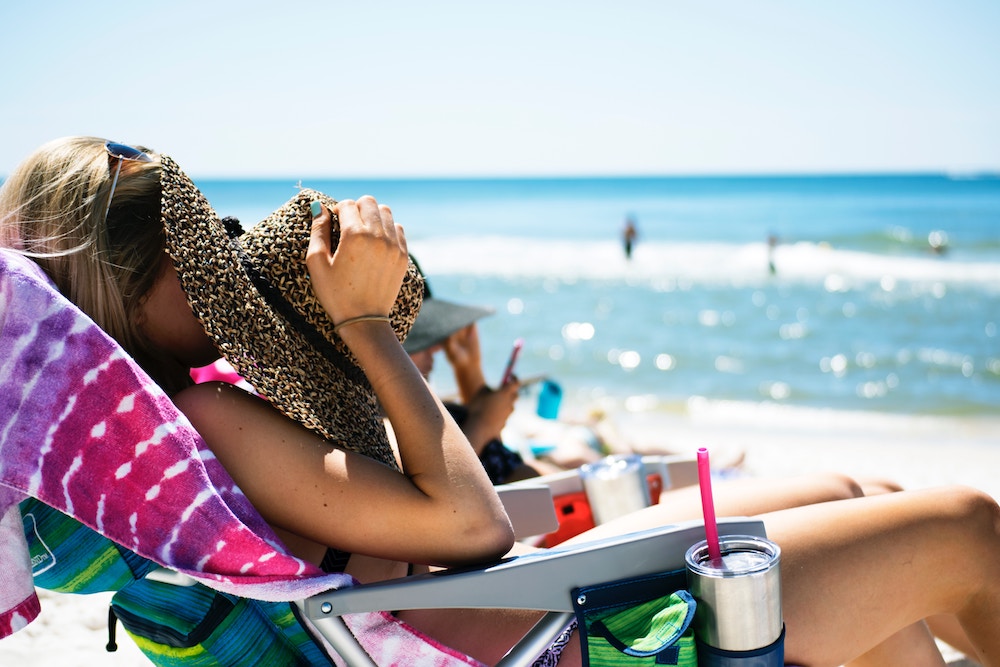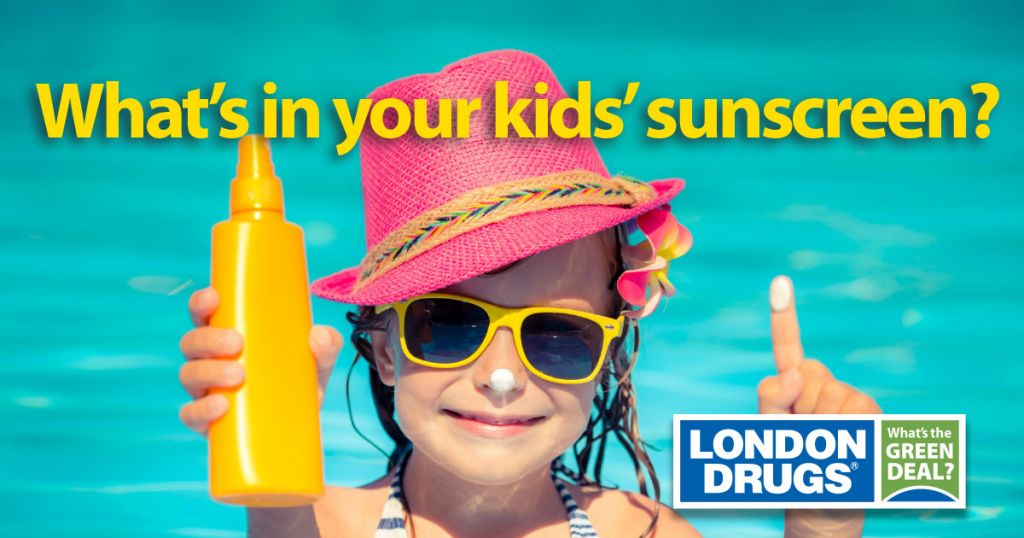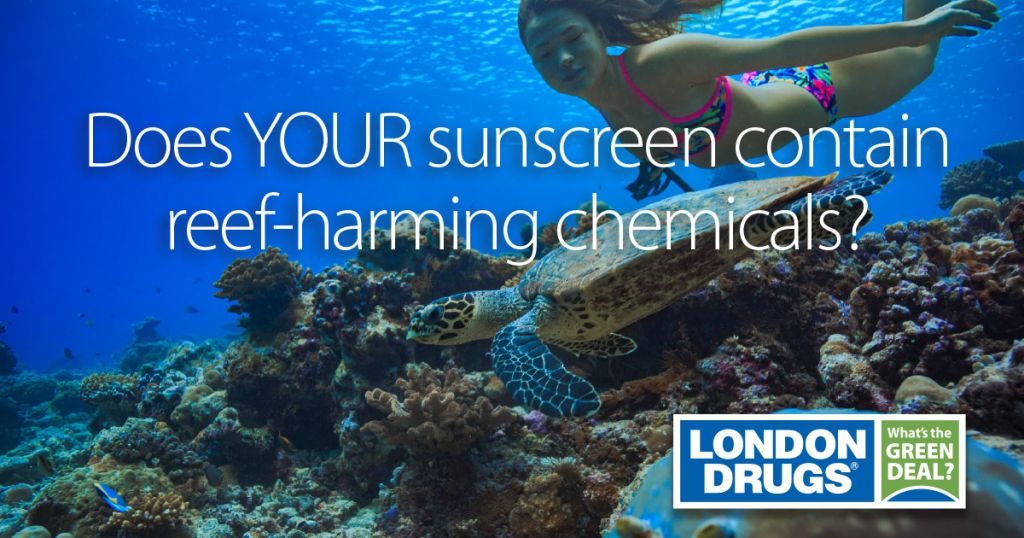
Sunscreen is one of those things we are supposed to apply liberally to our arms, legs, face, and our kids. So, what’s actually in it? How does sunscreen work? Are some sunscreens ‘greener’ than others?
Here’s a little summertime reading for anyone planning to protect themselves from the sun—5 things you need to know about sun safety.
1. Understand the two types of sunscreen
Mineral sunscreen creates a layer of particles (zinc or titanium oxide) that deflect the sun’s rays.
- Effective immediately
- Does not degrade from UV exposure
- Does not penetrate the skin
- Also effective against UVA rays
- Safe for use in coral areas
Chemical sunscreen uses compounds that absorb the sun’s rays, turning them into non-damaging wavelengths.
- Easy to apply, non-whitening
- Requires wait-time to be effective
- Chemicals can penetrate skin
- Chemicals degrade when exposed to UV
- May harm coral reefs
2. Know what’s in your chemical sunscreen

Chemical sunscreens typically contain a combination of two to six of the following active ingredients:
- Oxybenzone
- Octinoxate
- Octisalate
- Octocrylene
- Homosalate
- Avobenzone
Recently, concerns have been raised about long-term safety of some of these ingredients, particularly oxybenzone (benzophenone-3) which, in addition to sun protection, acts as a penetration enhancer. This chemical has been linked to allergies, hormone disruption, and cellular damage. Oxybenzone is present in over 500 other North American cosmetic items.
Remember to watch the spray! Spray sunscreens have increased in popularity, but some experts don’t recommend them because of the hazard of inhaling chemicals and particles.
3. Look for broad spectrum protection
The suns rays come in different lengths, and it’s a good idea to protect against them all. UVA radiation goes deeper into the skin (dermis), causes premature aging and wrinkles, and causes tanning. UVB radiation affects the skin’s surface (epidermis), contributes the most to burning of the skin, and damages your eyes.
4. Is higher SPF better?
People assume that they get twice as much protection from SPF 100 sunscreen as from SPF 50. In reality, the extra protection may be negligible. Used correctly, sunscreen with SPF values in the range of 30 to 50 will offer adequate protection, even for people most sensitive to sunburn. UV protection does not follow a linear relationship, meaning that if you apply half of the recommended amount you get less than half of the labeled SPF protection.
5. Protect the ecosystems and coral

There are biodegradable and reef safe options. 25 to 60 million bottles worth of sunscreen wash off into coral reef areas each year, and researchers have found that common sunscreen chemicals can be toxic to coral health. Hawaii has passed a law that will ban the sale of sunscreens that contain oxybenzone and octinoxate. Sunscreens with titanium oxide or zinc oxide—natural mineral ingredients—have not been found to be harmful to corals. If you are swimming in nature, choose one of these options.
London Drugs is pleased to offer a range of green sunscreen options. Here are some choices that protect as sustainably as possible:
Attitude Mineral Sunscreens
Mineral- based protection: Non-nano Zinc Oxide
Ecologo Certified™
Vegan, not tested on animals
UVA, UVB protection
Made in Canada
Aveeno Mineral & Aveeno Baby
Mineral based protection
UVA, UVB protection
Badger Sunscreens
Non-Nano Zinc Oxide Mineral Protection
Biodegradable
87% organic ingredients
UVA, UVB protection
Boo Bamboo Natural Sunscreen
Active ingredient: Zinc Oxide, Titanium Oxide
UVA, UVB protection
Made in Canada
Goddess Garden
Certified organic
Non-Nano, Reef Safe, Non-GMO, Biodegradable
Vegan, Cruelty Free, Paraben and Phthalate Free
UVA, UVB protection
Green Beaver
Non-nano zinc oxide and titanium oxide mineral protection
100% natural, biodegradable and reef friendly
Made in Canada
UVA, UVB protection
Neutrogena Sheer Zinc
Active ingredient: Zinc Oxide
UVA, UVB protection
If you want to learn more, visit greendeal.ca for blogs, videos, articles, and products to help you live a little greener.


Very user friendly. Love London Drugs